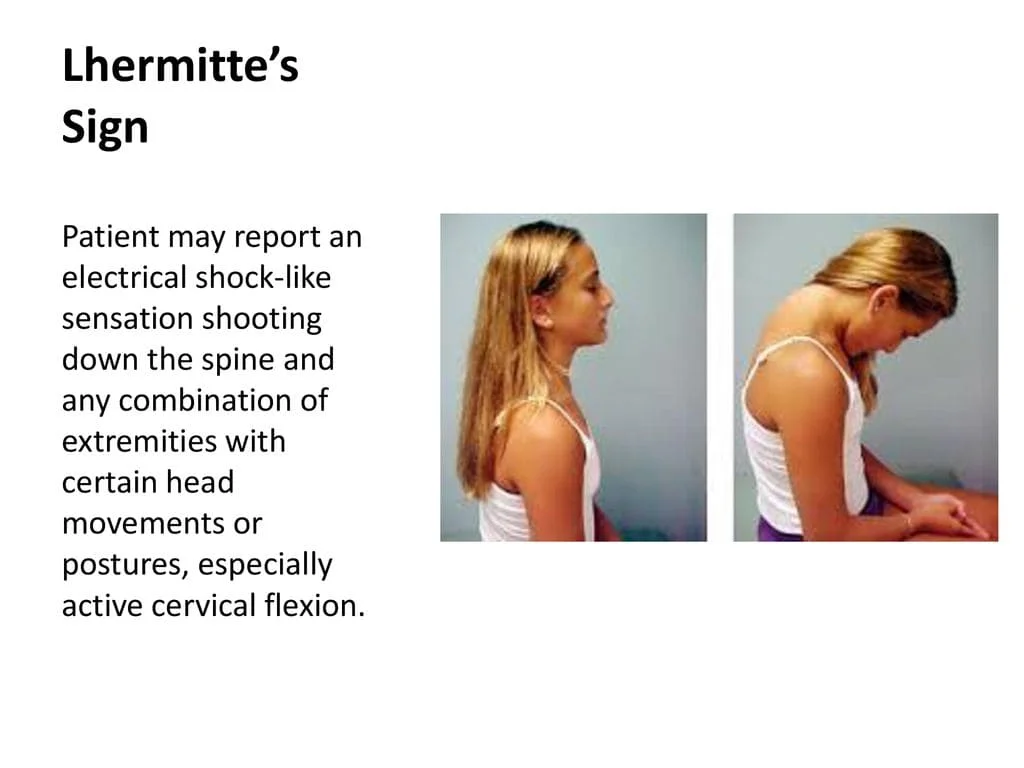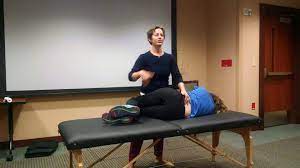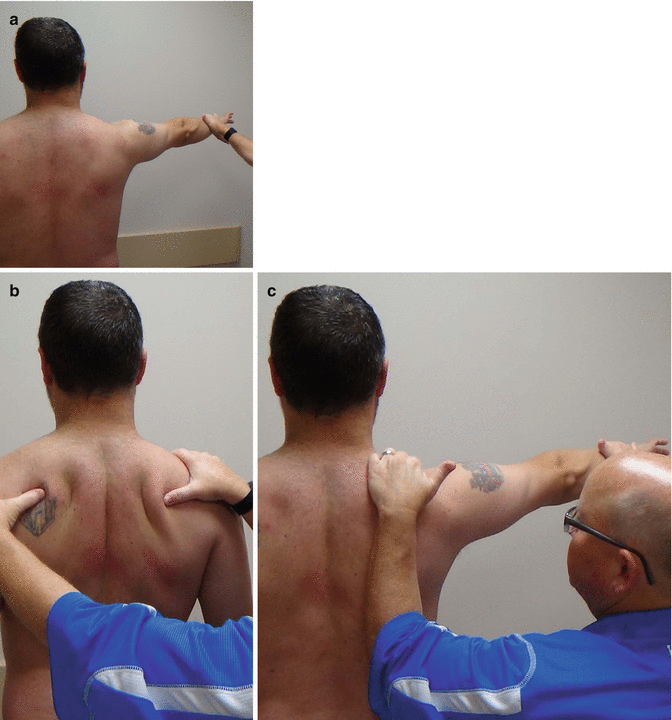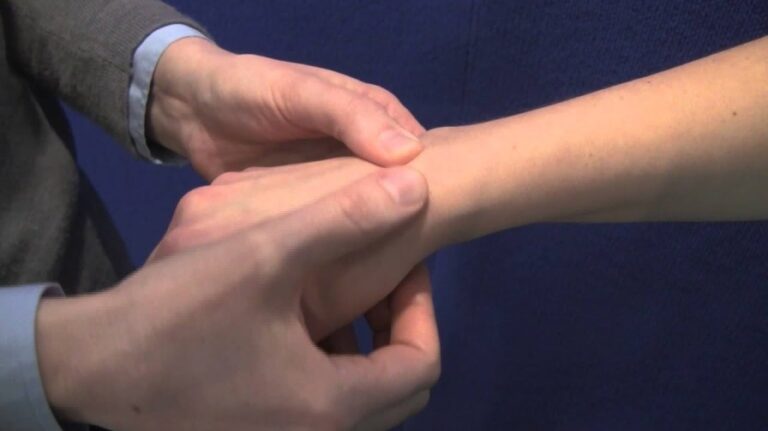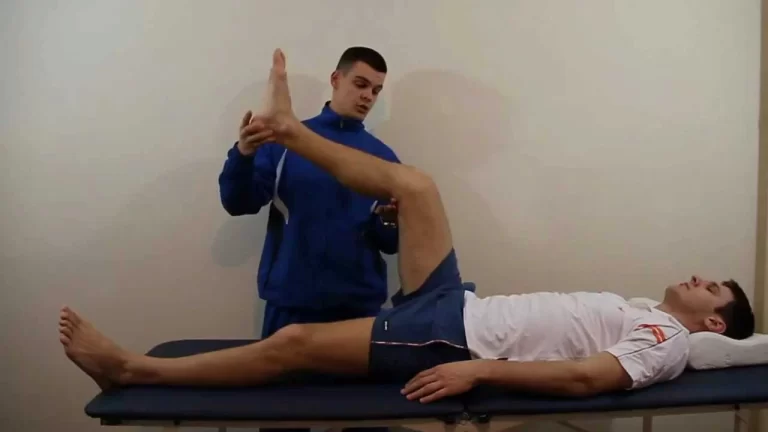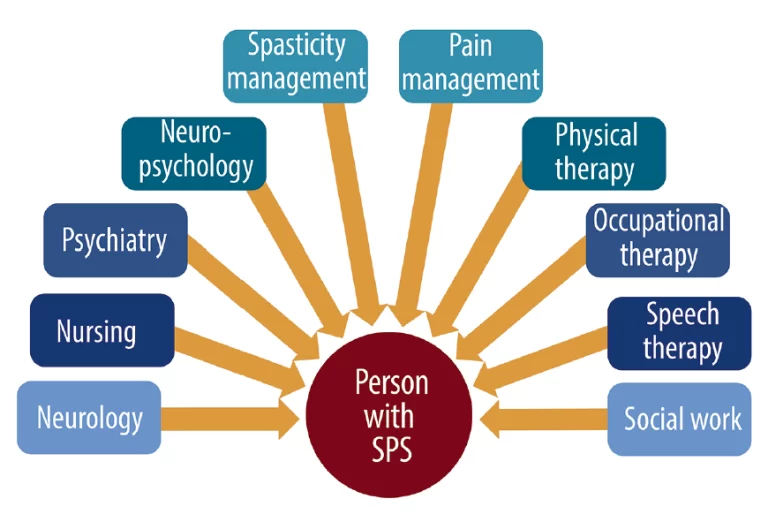Lhermitte’s sign
What is a Lhermitte’s sign?
Lhermitte’s sign, also known as the “barber chair phenomenon,” is a neurological symptom characterized by an electric shock-like sensation that travels down the spine and into the limbs, usually triggered by neck flexion. The sensation often occurs when a person bends their head forward, backward, or turns it to the side. The sensation is typically brief and lasts for just a few seconds.
Multiple sclerosis (MS), a chronic autoimmune condition that affects the central nervous system, is most frequently linked to this symptom. In MS, the protective sheath that surrounds the nerve fibers becomes destroyed, causing interference with nerve transmissions. The cervical spine’s injured nerve fibers might send incorrect signals when the neck is flexed, producing the recognizable electric shock-like sensation.
When the back of the neck bends, an electric shock-like trigger, also known as paresthesia, spreads down the spine and occasionally even to the trunk. The experience is quick and short. As a result, it only persists for a little while. It has the effect of stimulating the spinal cord or irritated/damaged nerves. It has a similar sensational/irritating effect to hitting the elbow. Because Lhermitte’s sign is typically explained by patients, it might be classified as a symptom.
Lhermitte’s sign can also appear in other disorders that damage the cervical spine or spinal cord, such as spinal cord injury, cervical spondylosis, or other demyelinating diseases.
History
Lhermitte’s sign was initially identified by Marie and Chatelin in 1917. The mention of the MS symptom first came up by Beriel and Devic in 1918.
Lhermitte et al. went on to describe it in great detail in a patient with MS and electric dysesthesias later in 1924. “Jacques Jean Lhermitte, a French neurologist is named “Lhermitte’s sign”.”
Causes of Lhermitte’s sign
There are a number of conditions that indicate the Lhermitte’s sign:
- Disease/Condition
- Multiple Sclerosis
- Head Trauma
- Cervical Spondylosis
- Transverse Myelitis
- Sub-acute combined degeneration of the cord
- Osteogenesis imperfecta
- Arnold-Chiari Malformation
- Arachnoiditis
- Syringomyelia
- Spinal Cord Compression/Herniation/Injury
- Spinal Cord Tumors
- Vitamin B12 Deficiency
- Systemic Lupus Erythematosus (SLE)
- Bechet’s Disease
- Atlanto-axial Subluxation
- Radiation
- Radiation Myelopathy
- Intensity-modulated Radiotherapy
- high-dose chemotherapy
- High dose
- Nitric Oxide Toxicity
- Oxaliplatin-Induced
- Parasitic
- Parasitic invasion of the Spinal Cord
- Herpes Zoster Infection
There have been reports of the Lhermittes sign present after head and/or neck trauma. This occurs about two and a half months after the initial injury, without any accompanying pain or neurological signs, and usually goes away within a year.
This symptom is occasionally part of a “discontinuation syndrome” linked to various psychiatric drugs, including paroxetine and venlafaxine, which are selective serotonin reuptake inhibitors and serotonin norepinephrine reuptake inhibitors. Usually, it only happens after taking the medicine for a while, stopping or withdrawing it quickly, or giving a lower amount. Fluoxetine can be administered as a single, modest dose and frequently prevents Lhermitte’s sign and other withdrawal symptoms due to its extremely extended half-life.
Three investigations (Layzer 1978, Gutmann 1979, and Blanco 1983) have found the Lhermitte sign in nitrous oxide abusers. This is most likely caused by vitamin B12 being rapidly and severely depleted by nitrous oxide in the absence of replenishment.
Prognosis
The Lhermitte’s phenomenon in a radiogenic-Lhermitte’s sign first appears three months after radiotherapy and gradually goes away within six months. However, only a small number of patients with severe symptoms may last more than a year. It is dependent on the spinal cord’s elevated metabolic activity brought on by altered conduction along the demyelinated spinal cord.
Carbamazepine treatment seemed to reduce the condition. Rarely is the sensation unbearable despite being quick and acute. Move aside, it indicates that the symptom subsides after six to eight flexions of the neck.
Treatment of Lhermitte’s sign
The discomfort caused by Lhermitte’s sign may typically be managed by most persons with the help of education and assurance. After many months to a year, it frequently disappears.
However, if it occurs frequently and has a major impact on a person’s quality of life, a doctor might advise treatment.
Lhermitte’s sign pain and other MS symptoms may be managed with the aid of a variety of treatments.
controlling stress
Some people benefit from relaxation practices. They consist of:
- meditation and awareness
- deep breathing exercises
- Regular stretching and Strengthening
An appropriate exercise can be suggested by a Physical Therapist.
Mechanical devices
A person may be able to prevent neck motions that cause Lhermitte’s sign by wearing a soft neck brace.
A low electric current is used by electrical stimulating devices, such as transcutaneous electrical nerve stimulation units, to reduce pain. These electrical pulses aid in muscle relaxation and the reduction of pain signals.
They might also trigger the creation of endorphin-producing hormones, which have analgesic properties.
Medical Treatment
Lhermitte’s sign is not specifically treated with medication. But there is some anecdotal proof that the following anticonvulsant seizure drugs might be beneficial:
- Oxcarbazepine (Trileptal)
- gabapentin (Neurontin)
- carbamazepine (Tegretol)
Muscle relaxants and antidepressants are examples of generic drugs that could help with symptom reduction.
Limitation
On Lhermitte’s sign, there aren’t many research with a lot of participants. To confirm its specificity and sensitivity, more research is needed in this area.
If someone shows Lhermitte’s sign, they should speak with a medical expert for an accurate assessment and diagnosis. It may be a crucial indicator for figuring out the underlying neurological disorders and developing effective treatment regimens. The main focus of Lhermitte’s sign treatment will be finding the root of the problem.
Summary
The neck and spine are affected by Lhermitte’s sign, which feels like an electric shock. Typically, it comes and goes quickly. But it might happen again. After many months or even up to a year, it frequently goes away on its own.
When someone with MS suddenly moves their neck or head, it may have an impact on them. It does not, however, solely happen with MS.
Lhermitte’s sign may cause annoyance and discomfort. It is not life-threatening, though, and does not indicate that MS is growing worse.
Anyone with MS who unexpectably feels this sensation should inform their doctor. The doctor might have ideas for lessening its effects.

